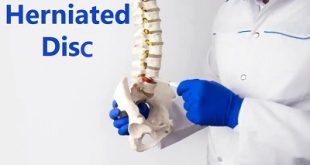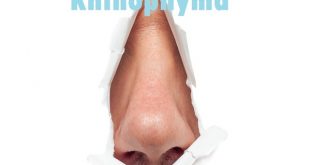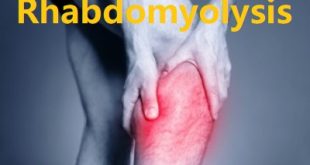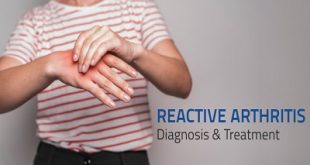Radiculopathy – Overview
Radiculopathy is a common condition that refers to any kind of pinched nerve root within the spine, which can then lead to a variety of painful symptoms. Nerve roots split off from the spinal cord as it travels through your vertebrae. Roots, in turn, anchor nerves, which can travel anywhere from a couple of millimeters to all the way down your arm or leg. For this reason, Radicular Pain can–but does not have to–travel.
Radiculopathy can occur in any part of the spine, but it is most common in the lower back (lumbar radiculopathy) and in the neck (cervical radiculopathy). It is less commonly found in the middle portion of the spine (thoracic radiculopathy). Epidural steroid injection is one of the interventional treatments offered to patients suffering from radiculopathy or radicular pain.
Types of Radiculopathy
It can have different symptoms and different names depending on where in the spine it occurs.
Lumbar Radiculopathy
When radiculopathy occurs in the lower back, it is known as lumbar radiculopathy, also referred to as sciatica because nerve roots that make up the sciatic nerve are often involved. The lower back is the area most frequently affected by radiculopathy.
Cervical Radiculopathy
Cervical radiculopathy describes a compressed nerve root in the neck (cervical spine). Because the nerve roots in this area of the spine primarily control sensations in your arms and hands, this is where the symptoms are most likely to occur.
Thoracic Radiculopathy
Thoracic radiculopathy refers to a compressed nerve root in the thoracic area of the spine, which is your upper back. This is the least common location for radiculopathy. The symptoms often follow a dermatomal distribution and can cause pain and numbness that wraps around to the front of your body.
Pathophysiology of Radiculopathy or Radicular Pain
Pain is caused by irritation of the nerve. The nerve is irritated secondary to pressure, pinch or irritation by chemicals produced by inflammatory tissue.
Disk herniation and bulge disk when protrudes into foramina cause pinch and irritation of the spinal nerve. Disk bulge and herniation also causes disk inflammation. Inflammatory disk produces chemicals such as substance P and prostaglandin E2. An inflammatory chemical irritates spinal nerve either in the spinal canal or foramina.
An inflammatory chemical also causes swelling of the nerve.
What causes Radiculopathy?
It can be caused by a variety of conditions or injuries, including:
- A herniated disc, when a disc protrudes, compressing the nerve root
- Sciatica
- Degenerative disc disease
- Bone spurs
- Tumors of the spine
- Osteoarthritis or spinal arthritis
- Spinal stenosis, a painful condition when the spinal canal narrows
- Compression fractures
- Spondylolisthesis, when a vertebra moves and rests on the vertebra below
- Scoliosis caused by an abnormal curve in the spine
- Diabetes, caused by altered nerve blood flow
- Cauda equine syndrome, an uncommon but serious condition when nerve root compression affects the pelvic organs and lower extremities
Risk Factors of Radiculopathy
You are at higher risk if you are sedentary and/or if you drive a lot; sitting compresses your discs, which may cause herniation and subsequent irritation of the nerve roots.
Other factors that may increase your risk for radiculopathy include:
- Male gender
- Chronic cough
- Pregnancy
- Heavy lifting (routine)
- Smoking
How it is clinically manifested?
The main symptoms include pain that feels like a burning sensation, numbness, and tingling in the arms or legs. If the condition is left untreated and allowed to progress it is possible that further symptoms such as muscle weakness and muscular atrophy will begin to be seen. In most cases, radiculopathy symptoms will begin mild and progress more as the condition worsens with time. However, catching the condition early and beginning its treatment is essential for a quick recovery.
The symptoms may vary according to its types
Cervical Radiculopathy Symptoms
- Pain that radiates through the shoulder, down the arm, and occasionally into the hand.
- Neck Pain.
- Loss of reflexes in the affected arm.
- Numbness and/or tingling in the arm and possibly the hand.
- Muscular weakness in the arm.
Lumbar Radiculopathy Symptoms
- Pain that radiates through your buttocks and down your legs; worsens when sitting.
- Sharp constant pain in the back of the leg that will get worse when standing or walking.
- Weakness or loss of function in the leg or foot.
- Numbness and/or tingling in one leg.
Thoracic radiculopathy symptoms
A person may experience pain in the chest and torso when the nerve compression or irritation occurs in the mid back region. Thoracic radiculopathy is an uncommon condition that may be misdiagnosed as shingles, heart, abdominal, or gallbladder complications.
Symptoms associated with this type include:
- Burning or shooting pain in the rib, side, or abdomen
- Numbness and tingling
How to identify the radiculopathy?
Your doctor may take several steps to diagnose radiculopathy:
- A physical exam and physical tests may be used to check your muscle strength and reflexes. If you have pain with certain movements, this may help your doctor identify the affected nerve root.
- Imaging tests, such as an X-ray, CT scan or MRI scan, are used to better see the structures in the problem area.
- Nerve conduction studies, along with electromyography, can also be used to help pinpoint whether the problem is neurological or muscular.
Treatment and Recovery for Radiculopathy
Non-Surgical Treatment
Treatment for cervical and lumbar radiculopathy begins non-invasively. In fact, the Hospital for Special Surgery review mentioned above reports that about 75 percent to 90 percent of people who are diagnosed with cervical radiculopathy improve without surgery. Moreover conservative therapies can be either active or passive, but that aggressive use of an array of active therapies, generally consisting of a multi-disciplinary approach that mainly features things to do that require patient participation, tends to get the best results.
This may include pain medication in combination with one or more of the following:
- Physical Therapy may help you stretch and strengthen your muscles, and develop core stabilization. You may also get traction while in PT.
- Immobilization of your cervical spine by wearing a collar helps soft tissues to heal properly.
- Positioning aids such as a cervical pillow for neck radiculopathy may help you get a good night’s sleep.
- Injections: Injection of steroid medication may help reduce swelling and pain, and keep you more comfortable.
Surgery
If a non-surgical approach fails to relieve the pain after six to twelve weeks, you may need surgery. The choice of specific procedure will likely depend on the type and location of the spinal nerve root compression, your surgeon’s expertise, and if you’ve previously had spine surgery.
Surgeries your doctor may consider include:
- Discectomy, which is the most commonly given procedure for radiculopathy due to the herniated disc, involves surgically removing the disc.
- Disectomy with fusion adds a spinal fusion to discectomy. The fusion may help stabilize the spinal column. This procedure may require a bone graft.
- Disc replacement is a relatively new surgical technique that is not often given. Proponents say its advantage over discectomy with fusion is that it preserves the motion of the spine at the level of the surgery.
- Posterior cervical laminoforaminotomy is sometimes given when only one herniated disc needs surgery and the disc material is exiting out the side of the vertebra.
Outlook
Most people with radiculopathy improve with conservative treatment such as medication and PT. However, surgery is recommended for some people with radiculopathy. They, too, usually improve after a recovery period. Following treatment, most people are able to work and take part in other daily activities.
Prevention
Some strategies may prevent nerve compression pain. These include:
- Maintaining good posture, even when driving
- Proper lifting techniques
- Taking regular physical activity, including weight-bearing exercises
- Developing core strength
- Maintaining a healthy weight
- Taking frequent breaks and incorporating stretching into routines
- Avoiding tilting the head to hold the phone to the shoulder
 Diseases Treatments Dictionary This is complete solution to read all diseases treatments Which covers Prevention, Causes, Symptoms, Medical Terms, Drugs, Prescription, Natural Remedies with cures and Treatments. Most of the common diseases were listed in names, split with categories.
Diseases Treatments Dictionary This is complete solution to read all diseases treatments Which covers Prevention, Causes, Symptoms, Medical Terms, Drugs, Prescription, Natural Remedies with cures and Treatments. Most of the common diseases were listed in names, split with categories.








pls is there any injection or drugs to be taking?
non-steroidal drugs, such as ibuprofen, aspirin or naproxen.
oral corticosteroids or injectable steroids.
narcotic pain medications.
extending my greating
I love medical work, an I can say God really give me the talent but due to poorvaty I am lost. thanks to this organization .
This help to provide treatment for little diseases
before going to the hospital thanks.
extending my greating I love medical work an,i can say God really give me the talent, due to poorvaty,i am lost,thank to this organization …….
I have a neourostimulator , Could this be the cause of cervical radiculopathy?
No, it may not cause such problems. But please consult a doctor.
Took medication but still there. Should surgery be a next possible treatment?
Yes, surgery would be better for a complete cure. But please consult a doctor for a proper treatment option.
burning on top right hand shoulder sometimes think bone cracks